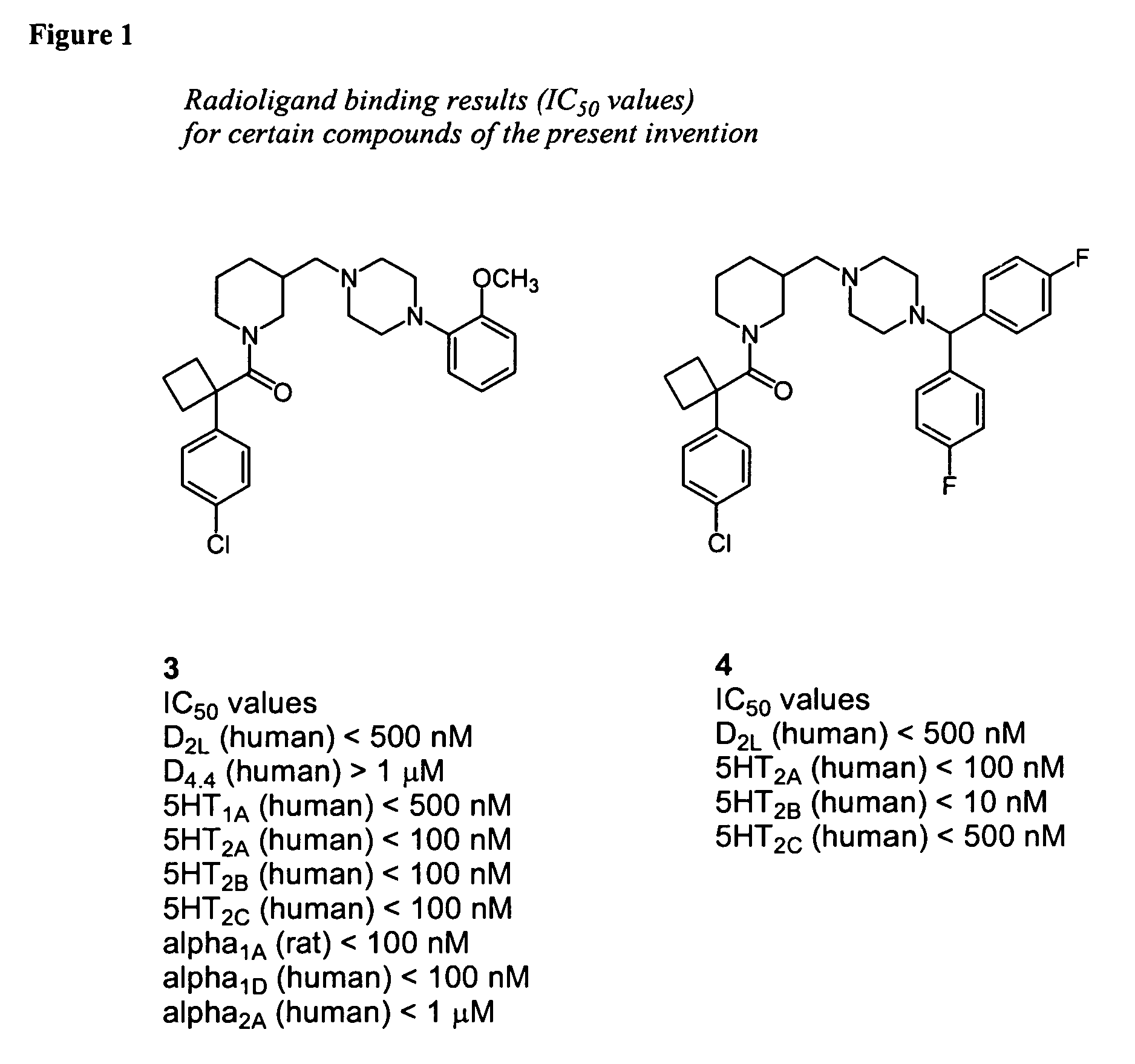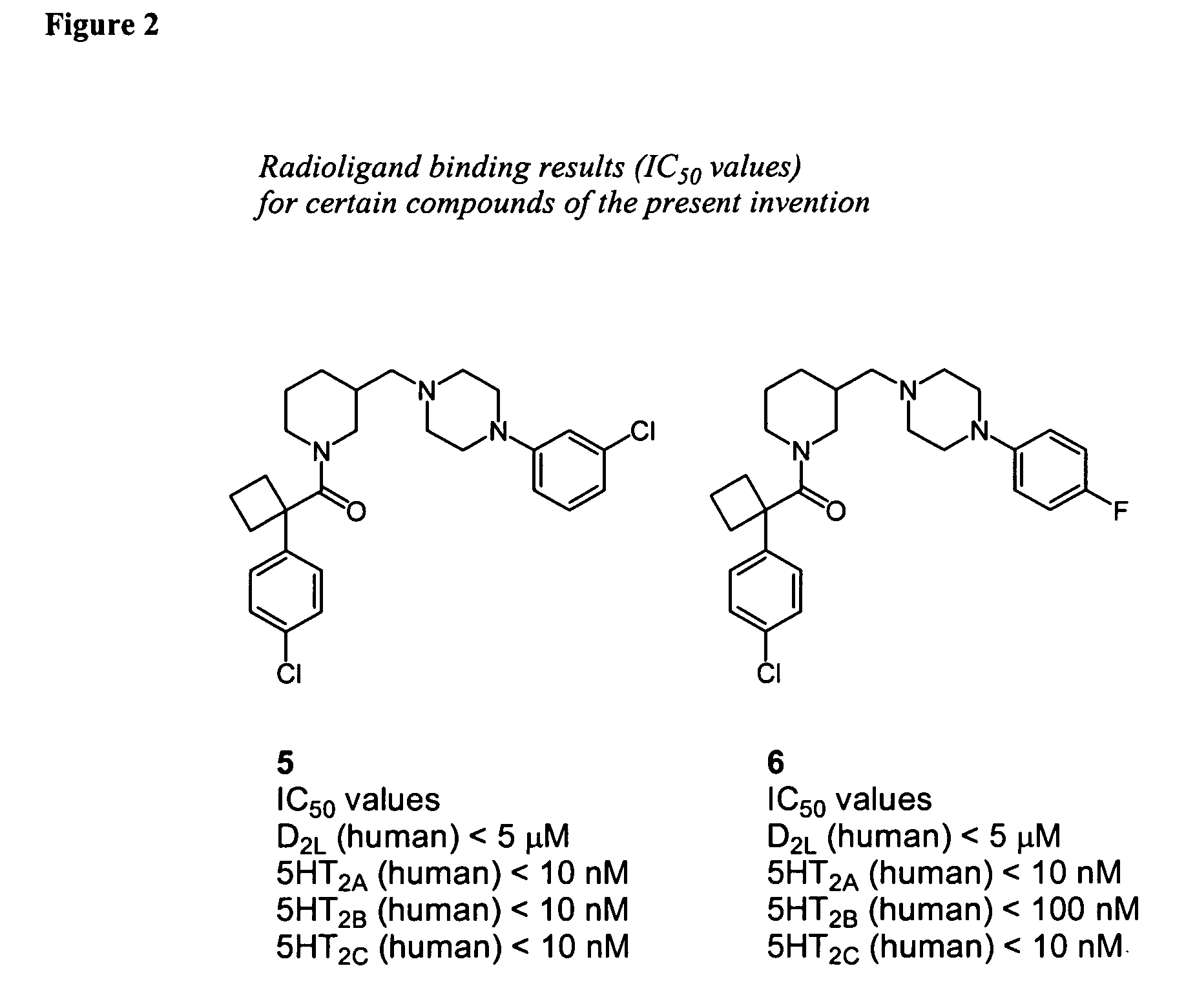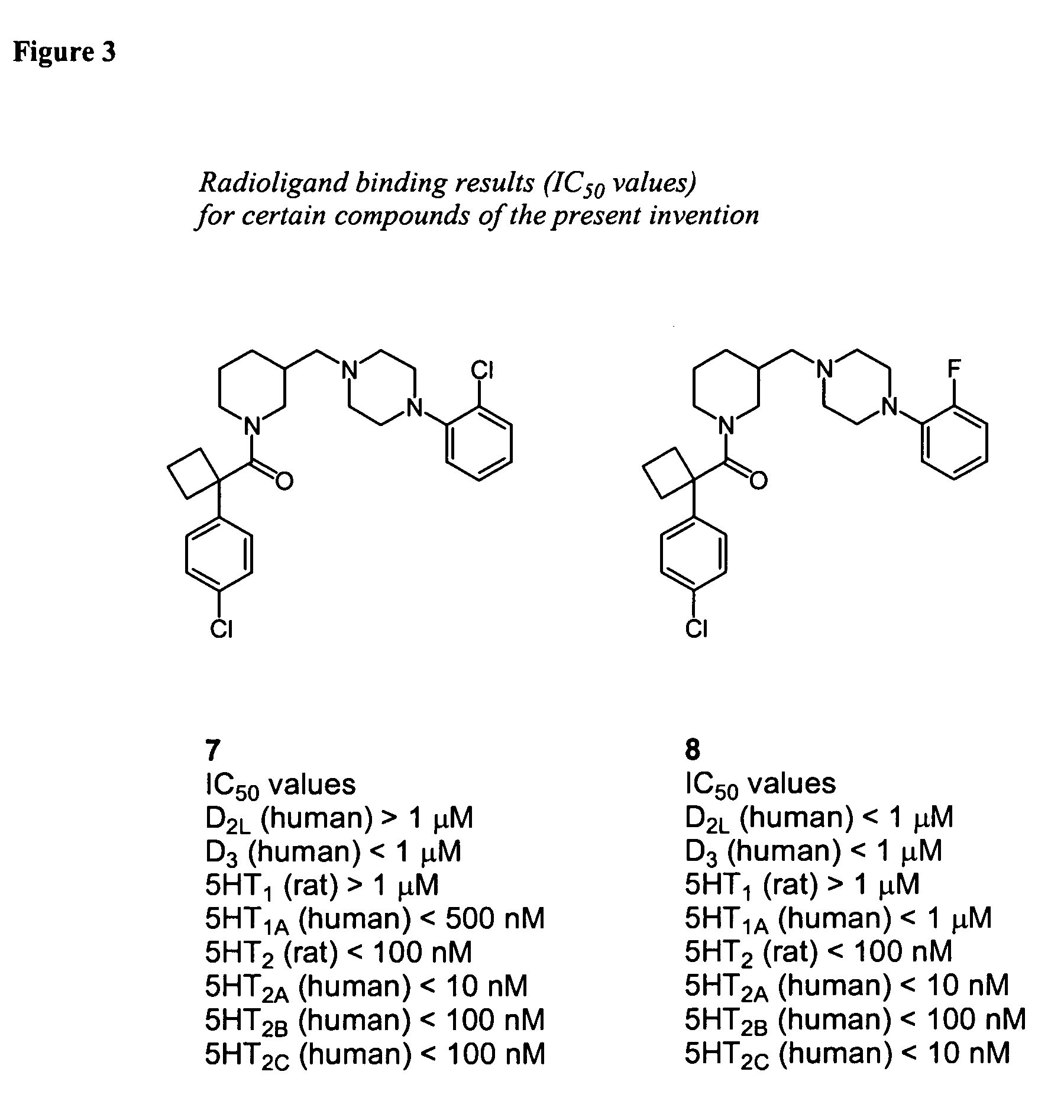Piperidine-piperazine ligands for neurotransmitter receptors
a neurotransmitter receptor and piperazine technology, applied in the field of piperidine-piperazine ligands for neurotransmitter receptors, can solve the problems of limited number of compounds that can be synthesized, desensitizing the receptor or ion channel, and limit the choice of reagents and conditions that can be used for the synthesis of non-oligomer libraries
- Summary
- Abstract
- Description
- Claims
- Application Information
AI Technical Summary
Benefits of technology
Problems solved by technology
Method used
Image
Examples
example 1
[0218] Synthesis of 1-[1-(4-chloro-phenyl)-cyclobutanecarbonyl]-piperidin-3-ylmethyl alcohol (1)
[0219] To a solution of 3-piperidinemethanol (5.0 g, 43.4 mmol), 1-(4-chlorophenyl)-1-cyclobutanecarboxylic acid (9.14 g, 43.4 mmol), and diisopropylethylamine (11.22 g, 86.8 mmol) in dichloromethane (100 mL) at 0° C. was added PyBroP® (22.26 g, 47.8 mmol). The reaction was stirred at 0° C. for 1 h and then at room temperature for 4 h. The reaction mixture was washed successively with water, 1 N HCl, water, sat. sodium bicarbonate solution, and water (100 mL each). The organic layer was dried over anhydrous sodium sulfate, filtered and concentrated by rotary evaporation. The residue was purified by chromatography on silica gel, eluting with dichloromethane / methanol (96:4) to give 5.8 g of the amide 1 as a thick gum.
example 2
[0220] Synthesis of Methanesulfonic acid 1-[1-(4-chloro-phenyl)-cyclobutanecarbonyl]-piperidin-3-ylmethyl ester (2)
[0221] The amide derivative 1 (5.0 g, 16.3 mmol) was dissolved in dichloromethane (50 mL) and cooled to 0° C. To this solution was added triethylamine (5.0 mL) followed by dropwise addition of methanesulfonyl chloride (2.05 g, 17.9 mmol). The reaction was stirred at 0 C for 1 h, and then at room temperature overnight. The reaction mixture was washed successively with water, 1 N HCl, water, sat. sodium bicarbonate solution, and water (100 mL each). The organic layer was dried over anhydrous sodium sulfate, filtered and concentrated by rotary evaporation. The residue was purified by chromatography on silica gel, eluting with hexane / ethyl acetate (2:1) to give 2 (4.45 g, 71%) as a tan gum; C18H24ClNO4S, LRMS (m / z)=386 (MH+).
example 3
[0222] Synthesis of [1-(4-Chloro-phenyl)-cyclobutyl]-{3-[4-(2-methoxy-phenyl)-piperazin-1-ylmethyl]-piperidin-1-yl}-methanone (3)
[0223] To a solution of 2 (1.0 g, 2.60 mmol) in acetonitrile (25 mL) was added 1-(2-methoxyphenyl)piperazine (0.55 g, 2.86 mmol) and triethylamine (2 mL). The reaction was stirred and refluxed for 20 h. After cooling to room temperature, most of solvent was removed by rotary evaporation. The reaction mixture was partitioned between dichloromethane and water (50 mL each), and the organic layer was washed with sat. sodium carbonate (50 mL) and water. The organic layer was dried over anhydrous sodium sulfate, filtered and concentrated by rotary evaporation. The organic residue was purified by flash chromatography on silica gel, eluting with dichloromethane / 2.0 M ammonia in ethyl alcohol (96:4) to give 3 (0.54 g, 43%) as a light brown solid; C28H36ClN3O2, LRMS (m / z)=483 (MH+).
PUM
| Property | Measurement | Unit |
|---|---|---|
| temperature | aaaaa | aaaaa |
| pH | aaaaa | aaaaa |
| pH | aaaaa | aaaaa |
Abstract
Description
Claims
Application Information
 Login to View More
Login to View More - R&D Engineer
- R&D Manager
- IP Professional
- Industry Leading Data Capabilities
- Powerful AI technology
- Patent DNA Extraction
Browse by: Latest US Patents, China's latest patents, Technical Efficacy Thesaurus, Application Domain, Technology Topic, Popular Technical Reports.
© 2024 PatSnap. All rights reserved.Legal|Privacy policy|Modern Slavery Act Transparency Statement|Sitemap|About US| Contact US: help@patsnap.com










